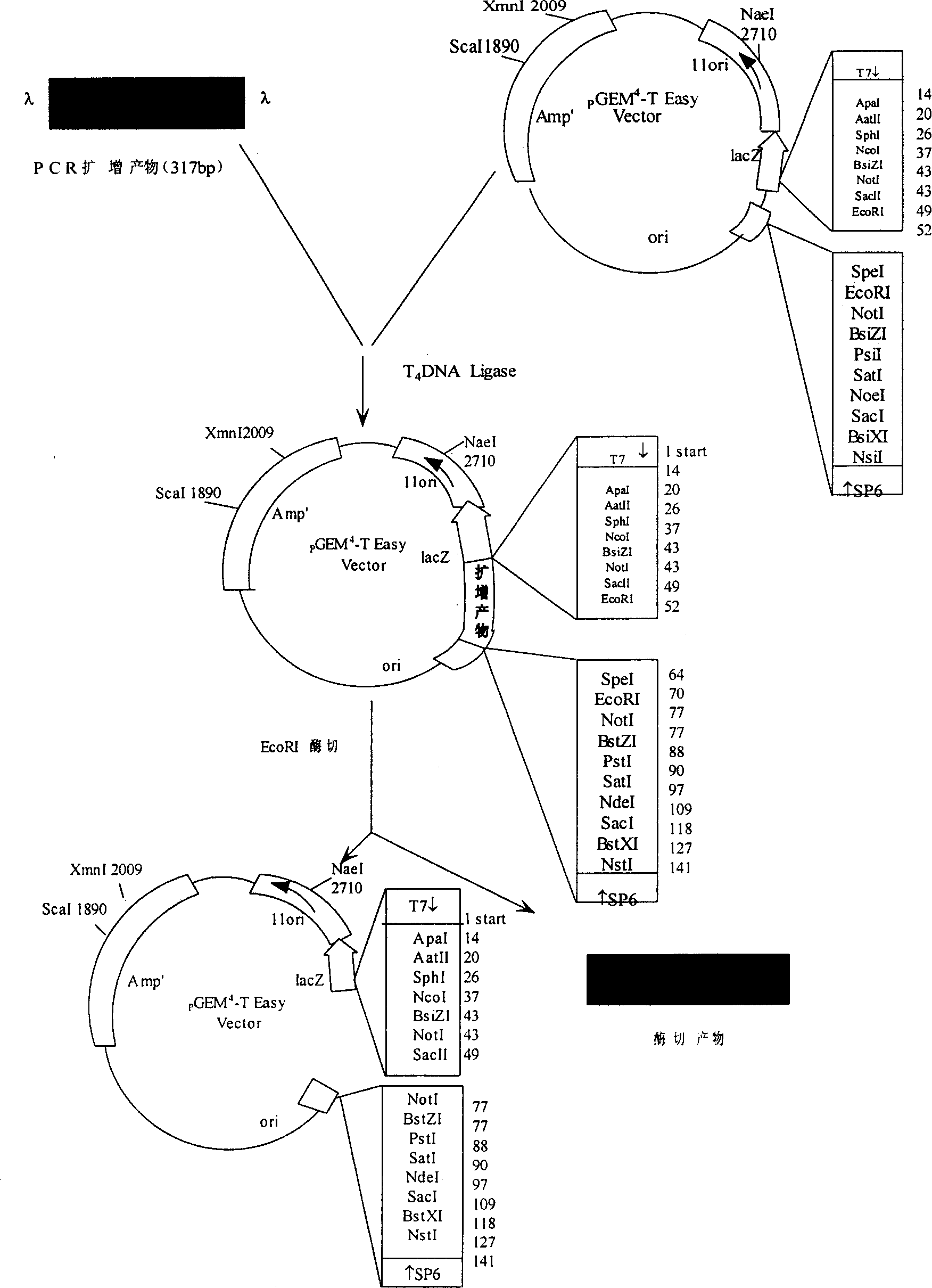Nucleic acid molecular hybridization detection method for silkworm nosema disease
A technology of nucleic acid molecular hybridization and silkworm microparticles, which is applied in the determination/inspection of microorganisms, biochemical equipment and methods, etc., can solve the problems of low sensitivity, poor accuracy, and long time consumption, and achieve high content and good quality.
- Summary
- Abstract
- Description
- Claims
- Application Information
AI Technical Summary
Problems solved by technology
Method used
Image
Examples
Embodiment Construction
[0016] Concrete operation steps of the present invention are as follows:
[0017] Extraction of Microsporidia DNA from Bombyx mori→polymerase chain reaction (PCR)→PCR product cloning and identification of recombinant plasmids→recombinant plasmid sequence analysis→specific identification of N.B. spores by DIG-labeled probes→detection sensitivity of N.B. Identification → Application of DIG-labeled probes in sericulture production.
[0018] 1. Extraction of DNA from Nosporum silkworm: extract with proteinase K phenol chloroform extraction. The silkworm fed with microsporidia is crushed and purified, and the operation is carried out as follows:
[0019]
[0020]
[0021] Microsporidia genomic DNA extracted by this method ( figure 1 ) content of up to 7 to 18 micrograms.
[0022] 2. Polymerase Chain reaction (PCR for short): According to the GenBank Sequence database of the National Center for Biotechnology Information (NCBI), the nucleotide sequences of all reported micro...
PUM
 Login to View More
Login to View More Abstract
Description
Claims
Application Information
 Login to View More
Login to View More - R&D
- Intellectual Property
- Life Sciences
- Materials
- Tech Scout
- Unparalleled Data Quality
- Higher Quality Content
- 60% Fewer Hallucinations
Browse by: Latest US Patents, China's latest patents, Technical Efficacy Thesaurus, Application Domain, Technology Topic, Popular Technical Reports.
© 2025 PatSnap. All rights reserved.Legal|Privacy policy|Modern Slavery Act Transparency Statement|Sitemap|About US| Contact US: help@patsnap.com



